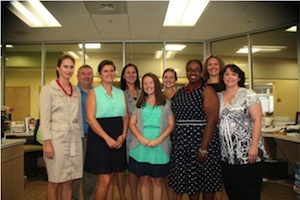Every week our elementary faculty meets in Professional Learning Communities (PLCs). Learning Communities are compiled of two grade levels working together to ensure student success. Kindergarten and first grade form a learning community, second and third grade are another, and fourth and fifth grades make up the last elementary learning community at P. K. Yonge Developmental Research School in Gainesville, FL. There are six core grade-level teachers and one learning community leader that facilitates the weekly PLC meetings.
When we meet, we discuss student data. Student data is used to drive our instructional conversations. Using student data invites the teachers to have a growth mindset rather than taking a “defensive stance.” It always goes back to the students and their needs, rather than focusing on the teachers. We collect several pieces of data such as: student work artifacts, diagnostic tests, teacher observations, test scores, etc. We look at all the pieces of data in order to make informed decisions about our curriculum and instruction. It is critical to allow student data to drive the PLC discussions because it forces the teachers to focus on the students and their individual needs. When looking at the data, we talk about differentiation and discuss the instruction occurring within the separate tiers within the Florida’s Response to Intervention (RtI) framework.
Tier 1 is the core instruction that all students will receive throughout the year. Tier 2 (about 15 percent of the students) will receive instructional supports. Tier 3 (about 5 percent of the students) will receive intensive and more individualized instruction. By discussing the instruction happening in each tier, we are ensuring that the instruction is systematic and builds upon the instruction in the other tiers. In addition to examining the tiered instruction, we also review our core effectiveness. If 80 percent of our students are reaching the intended targets/grade-level benchmarks, then we believe that our core instruction is effective at meeting the needs of the students. If 80 percent of the students are not reaching the intended targets, then we need to improve our core before moving students into tiered instruction.
Student data drives our instructional PLC conversations. Through data-based decision making, we are able to move students through tiered instruction to best meet their unique needs.

